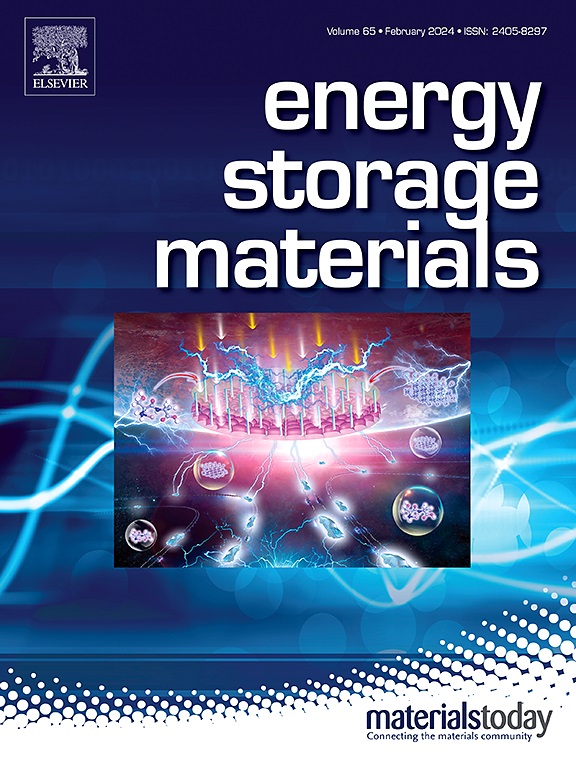Lithium ion mediated competitive mechanism in polymer solution for fast phase-inversion toward advanced porous electrode materials
IF 20.2
1区 材料科学
Q1 CHEMISTRY, PHYSICAL
引用次数: 0
Abstract
Designing micro- and nanostructures of carbon materials is intriguing from both the aspects of fundamental science and of engineering. The structure of carbon precursors exerts a decisive impact on the structure and performance of carbon materials. When polymers serve as carbon precursors, their aggregated state structures determine the specific surface area and pore structure of porous carbon. This paper presents a brand-new strategy for regulating the aggregated state structure of polyacrylonitrile through solvation of lithium ions and investigates the influence of the strength of solvation on the aggregated state structure and porous carbon structure. This regulation process does not exhibit a linear trend. The prepared porous carbon is applied as electrode materials for the negative electrodes of supercapacitor. It is discovered that during this solvation regulation process, a competitive relationship is formed with the other three forces in the solution, ultimately affecting the solvent bridge structure and phase transformation rate of polyacrylonitrile. When the concentration of lithium chloride reaches a nearly saturated level of 10 %, the capacity of the porous carbon can increase to 322.8 F g-1, which demonstrates excellent cycling stability. To explore the universality of this strategy in regulating the carbon structure, the material is also employed as the negative electrode of sodium-ion batteries.


聚合物溶液中锂离子介导的竞争机制用于先进多孔电极材料的快速相变
设计碳材料的微纳米结构从基础科学和工程的角度来看都是一个有趣的问题。碳前驱体的结构对碳材料的结构和性能有着决定性的影响。聚合物作为碳前驱体时,其聚集态结构决定了多孔碳的比表面积和孔结构。本文提出了一种通过锂离子溶剂化调节聚丙烯腈聚集态结构的全新策略,并研究了溶剂化强度对聚丙烯腈聚集态结构和多孔碳结构的影响。这一调节过程并不呈现线性趋势。制备的多孔碳作为超级电容器负极的电极材料。研究发现,在此溶剂化调节过程中,与溶液中的其他三种力形成竞争关系,最终影响聚丙烯腈的溶剂桥结构和相变速率。当氯化锂浓度达到接近饱和水平的10%时,多孔碳的容量可增加到322.8 F -1,具有良好的循环稳定性。为了探索这一策略在调节碳结构中的普遍性,该材料还被用作钠离子电池的负极。
本文章由计算机程序翻译,如有差异,请以英文原文为准。
求助全文
约1分钟内获得全文
求助全文
来源期刊

Energy Storage Materials
Materials Science-General Materials Science
CiteScore
33.00
自引率
5.90%
发文量
652
审稿时长
27 days
期刊介绍:
Energy Storage Materials is a global interdisciplinary journal dedicated to sharing scientific and technological advancements in materials and devices for advanced energy storage and related energy conversion, such as in metal-O2 batteries. The journal features comprehensive research articles, including full papers and short communications, as well as authoritative feature articles and reviews by leading experts in the field.
Energy Storage Materials covers a wide range of topics, including the synthesis, fabrication, structure, properties, performance, and technological applications of energy storage materials. Additionally, the journal explores strategies, policies, and developments in the field of energy storage materials and devices for sustainable energy.
Published papers are selected based on their scientific and technological significance, their ability to provide valuable new knowledge, and their relevance to the international research community.
 求助内容:
求助内容: 应助结果提醒方式:
应助结果提醒方式:


